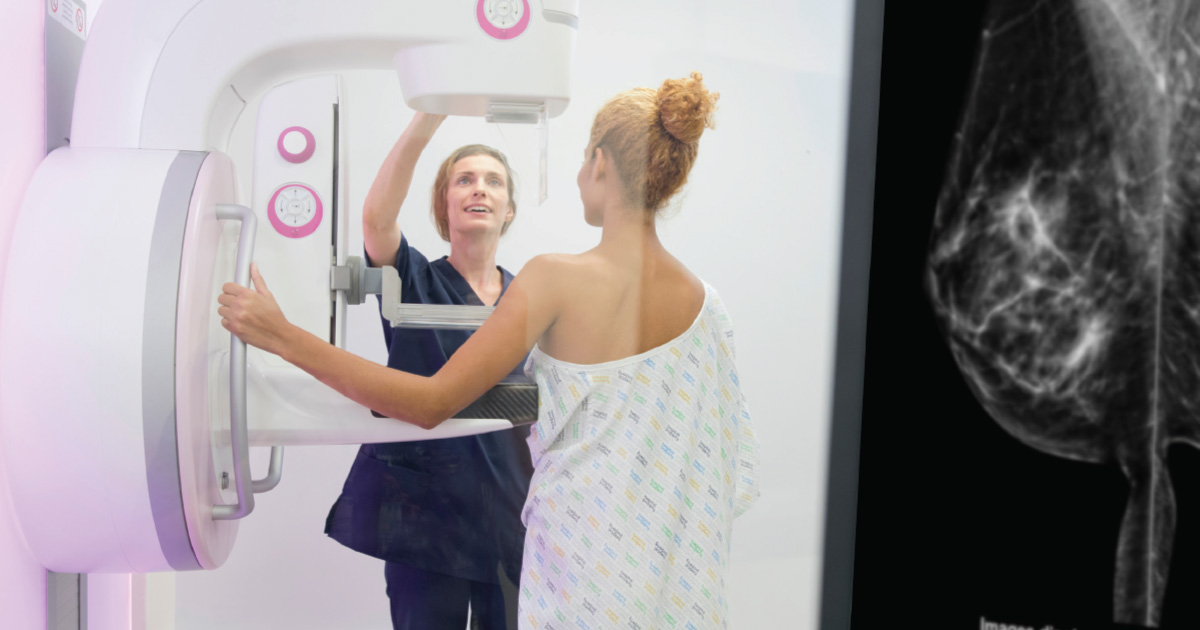
Breast Health
Breast Changes – What’s Normal, What’s Not?
Just like the rest of our body, our breasts can change a lot throughout our lifetime. Things like our menstrual cycle, pregnancy, weight loss or weight gain, and menopause can all impact the look and feel of our breasts. Sometimes the changes we experience are completely normal, and sometimes the changes could be an indicator of something more. Here’s a look into possible breast changes you can experience and how to decipher what’s normal and what’s not.
Soreness and Tenderness
Breast soreness and tenderness can be very common leading up to and during your period. Other factors like an ill-fitting bra, physical activity, weight gain, and exercise could contribute to breast soreness. Certain medications like hormonal contraception may also cause breast pain.
Many women may be concerned about pain in their breasts (also known clinically as mastodynia), but breast pain alone is not commonly a symptom of cancer. Inflammatory breast cancer causes pain but is a rarer form of cancer accounting for 1% to 5% of breast cancer cases in the United States.
What’s important here is to monitor the pain. If it seems to persist for more than a week, is associated with other symptoms like redness or discoloration, or if it’s getting in the way of your daily activities, it’s important to check-in with your provider.
Lumps and Cysts
Breast lumps can actually be quite common, especially during a woman’s reproductive years. These lumps can be caused by cysts which are fluid-filled sacs that can build up around a woman’s period. Other causes of breast lumps are fibroadenomas, which are non-cancerous tumors that grow in the breast tissue.
While breast lumps may be benign, they are never something to ignore. Women should always contact their physician if they notice a new lump and monitor it closely.
Swelling
Breast swelling can be common around menstruation. The rise in the hormones estrogen and progesterone leading up to your period can cause your breasts to enlarge and retain water. Breast swelling can also be an early sign of pregnancy. If you’re breastfeeding, it’s also possible to experience swelling with mastitis, an infection of your milk ducts. Mastitis can typically be treated with antibiotics.
If the swelling is not in sync with your period, pregnancy, or is accompanied by symptoms of redness, fever, rash, unexpected discharge, cracking of the nipple, or dimpling of puckering of the skin on your breast, it’s important to contact your physician.
Nipple Discharge
Nipple discharge is often harmless and can occur during pregnancy, breastfeeding, sexual arousal, or during hormonal changes like menopause or menstruation.
Nipple discharge is considered abnormal if it occurs spontaneously, only in one breast, is associated with a lump, or contains blood. You should contact your provider if you’re experiencing these symptoms.
Changes In Shape and Texture
It’s normal to have some asymmetry between your breasts, but it’s important to monitor any sudden changes in shape. If one breast seems to change more than the other, it’s worth getting it checked out.
When it comes to texture, it’s also important to keep an eye on changes like puckering, dimpling, or itching, especially if you’re 40 or older. If you notice anything that seems out of the ordinary for you and your body, notify your provider.
The Importance of Knowing Your Breasts
No one knows your body better than you do! With regular self-breast exams, you can keep up with how your breasts look and feel normally and be on the lookout for any unusual changes. Here’s a helpful guide on 5 steps to completing a self-breast exam. The best time to complete a self-exam is right after your menstrual cycle.
It’s also important to keep up with regular screening mammograms if you are 40 or older. Many organizations including the United States Preventive Services Task Force, the American College of Obstetricians and Gynecologists, and the American College of Radiology recommend women begin screening for breast cancer at age 40. Mammograms are the best tool for detecting cancer in its early stages, when it is most treatable.
Axia Women’s Health is here to support you in making caring for your breast health as convenient as possible. Many of our care centers now offer in-suite mammography or are located within a short drive to an Axia Women’s Health mammography center. Our centers offer the most advanced technology, including 3D mammography and breast ultrasound, as well as new AI-assisted mammography – providing a second set of eyes to empower your breast-specialized radiologist to detect breast cancer earlier and more accurately.
The Bottom Line
Monitoring changes in your breast through monthly breast exams and regular visits with your provider is critical to stay on top of your breast health and detect any changes early. While certain symptoms like swelling or pain may be a common occurrence, symptoms like a lump are always worth investigating. In addition, it’s important to understand your individual risk factors and the best screening plan for you. There are so many things in life we can’t control, but we owe it to ourselves to take charge of the things we can!








